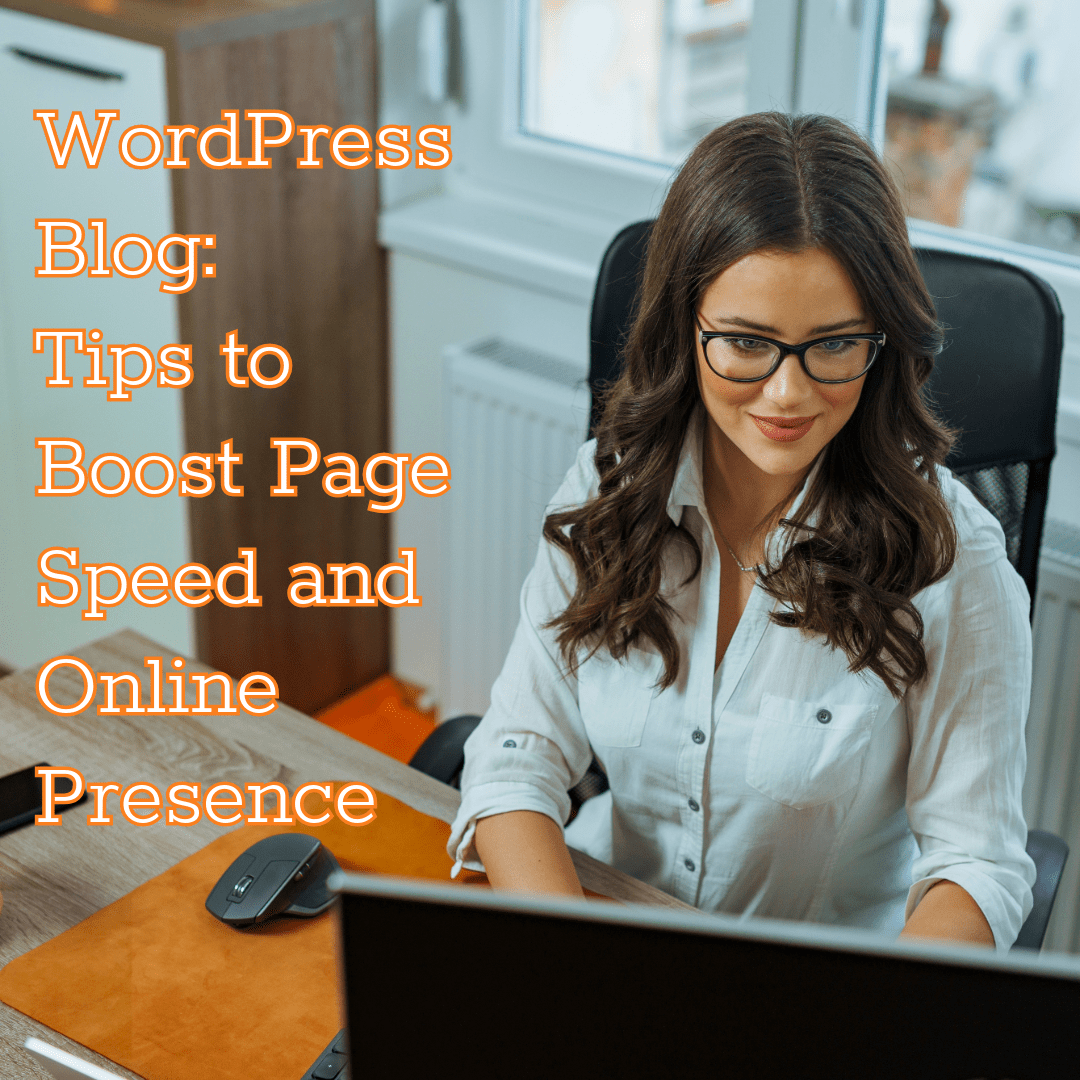
In today’s competitive digital landscape, having a high-performing WordPress blog is essential for attracting and retaining visitors. Whether you are a seasoned blogger or just starting, your website’s page speed and online presence can help drive traffic, engage readers, and achieve your business goals.
Here are some practical tips to boost your WordPress blog’s page speed and enhance its online presence.
WordPress Blog: Tips to Boost Page Speed and Online Presence

The Importance of Page Speed
- Impact on User Experience and SEO
Page speed is more than a technical metric—it directly influences how users interact with your site. Studies show, that visitors will abandon a website if it takes more than a few seconds to load.
This quick loss of interest affects your bounce rate and has a negative impact on search engine rankings. Search engines like Google use page speed as one of the ranking factors, meaning a slow-loading site might struggle to appear in top search results.

A fast-loading website provides a smooth user experience, keeps visitors engaged, and encourages them to explore your content further. When users have a positive experience, they like to share your blog posts on social media and return for future visits.
Therefore, optimizing page speed is a fundamental step to building a strong online presence.
- Enhancing Mobile Performance
For users accessing the web via mobile devices, page speed optimization is crucial. Mobile users often face slower connections and less powerful hardware compared to desktop users.

By focusing on page speed improvements, you ensure that your blog remains accessible and responsive across all devices.
This mobile-friendly approach improves user satisfaction and aligns with Google’s mobile-first indexing practices.
Page Speed Optimization Techniques
- Choose a Reliable Hosting Provider
The foundation of a fast WordPress blog starts with a high-quality hosting provider. Investing in managed WordPress hosting can improve your website’s performance.

Managed hosts are optimized specifically for WordPress, offering features like caching, security enhancements, and performance monitoring.
A robust hosting solution ensures your blog can handle traffic surges while maintaining quick load times.
- Utilize Caching Plugins
Caching is one of the most effective ways to enhance page speed. By storing static versions of your web pages, caching plugins reduces the load on your server and deliver content to visitors more quickly.

Popular caching plugins like WP Super Cache, W3 Total Cache, and WP Rocket simplify the process, allowing you to set up caching with minimal technical knowledge.
These plugins help decrease server response time, resulting in a smoother browsing experience for your visitors.
- Optimize Images and Media Files
Images and media files are often the largest elements on a web page. High-resolution images can slow down your site if not optimized. Use image compression tools like TinyPNG or ShortPixel to reduce file sizes without sacrificing quality.

Additionally, consider using the WebP image format, which offers superior compression compared to JPEG or PNG.
Implementing lazy loading—a technique that loads images only when they appear in the user’s viewport—can enhance page speed by deferring the loading of off-screen images.
- Minify CSS, JavaScript, and HTML
Every extra byte of code on your web page can contribute to slower load times. Minification is the process of removing unnecessary characters, comments, and whitespace from your code files, which helps to reduce their size.

Tools and plugins like Autoptimize or caching plugins often include minification features.
By compressing your CSS, JavaScript, and HTML files, you can achieve faster rendering and improved performance.
- Leverage a Content Delivery Network (CDN)
A CDN distributes your website’s static content across multiple servers worldwide. When a visitor requests your site, the CDN delivers content from the server closest to them, reducing latency and speeding up load times.

Popular CDN providers such as Cloudflare, MaxCDN, and Amazon CloudFront offer easy integration with WordPress, ensuring that your content reaches users quickly regardless of their geographical location.
- Use a Lightweight Theme and Reduce Plugins
The choice of theme can impact your site’s speed. Use lightweight and well-coded themes that focus on performance without unnecessary features. Furthermore, each plugin you install adds extra code that can slow down your site.

Regularly audit your plugins and deactivate or remove any that are not essential to your blog’s functionality. By keeping your theme and plugins optimized, you create a faster website.
Boosting Your Online Presence
- Focus on Quality Content
At the heart of every successful blog is high-quality content. Create well-researched, engaging, and valuable articles that address your audience’s needs and questions.

Consistently publishing quality content improves your credibility and increases the likelihood of attracting backlinks from other websites.
These backlinks are crucial for search engine optimization (SEO) and can boost your online visibility.
- Implement On-Page SEO Best Practices
On-page SEO involves optimizing pages to rank higher and earn more relevant traffic from search engines. This includes crafting compelling meta titles and descriptions, using header tags (H1, H2, H3) appropriately, and incorporating targeted keywords naturally throughout your content.

Tools like Yoast SEO or Rank Math can guide you through the process, ensuring that each post is fully optimized. An optimized website attracts search engines and provides a better user experience, keeping visitors engaged longer.
- Build a Robust Social Media Strategy
Social media is an invaluable tool for expanding your online presence. Promote your blog posts across various platforms such as Facebook, Twitter(X), Instagram, and LinkedIn to reach new audiences.

Engaging content, regular updates, and interactive posts can drive traffic to your website. Consider integrating social sharing buttons on your blog to make it easier for visitors to share your content.
Additionally, platforms like Pinterest or BlueSky can be effective for visual content, providing another avenue for attracting readers.
- Engage with Your Audience
Building an online presence is not just about publishing content—it’s also about fostering community. Respond to comments on your blog, participate in discussions on social media, and consider hosting webinars or live Q&A sessions.

Engaging directly with your audience builds trust and loyalty, making your readers feel valued. This personal connection can encourage repeat visits, social shares, and word-of-mouth referrals, which contribute to a stronger online presence.
- Leverage Email Marketing
Email marketing remains one of the most effective ways to maintain contact with your audience. By offering valuable content through newsletters, you can nurture relationships with your readers and drive repeat traffic to your blog.

Tools like Mailchimp or ConvertKit can help create and manage email campaigns.
Integrating Speed and Presence Strategies
A fast website enhances user experience and reduces bounce rates, which in turn can improve your search engine rankings. With higher rankings, your content is more likely to be discovered by potential readers.
Similarly, a strong online presence driven by quality content, social media engagement, and SEO strategies will naturally lead to increased traffic, providing more opportunities to boost your blog.

One practical way to integrate these strategies is by regularly monitoring your website’s performance using tools like Google PageSpeed Insights, GTmetrix, or Pingdom.
These tools provide insights into areas where your site can improve. Regularly reviewing these metrics allows you to stay proactive, addressing any performance issues before they impact user experience or search rankings.
Additionally, consider performing regular SEO audits to ensure that technical and content-related aspects of your site are up-to-date.
An integrated approach that combines technical optimizations with content and marketing strategies will create a robust online ecosystem, allowing your WordPress blog to thrive and drive success.

In the world of digital content, a successful WordPress blog is built on a foundation of speed, performance, and a strong online presence.
A well-optimized WordPress blog attracts more visitors and keeps them engaged, fostering a community of loyal readers.
As you continue to refine your approach, remember that page speed and online presence are dynamic elements—regular monitoring, updating, and adapting your strategies are key to maintaining success in an ever-evolving digital landscape.

Use these tips to transform your WordPress blog into a high-performing platform that offers speed and a strong online presence.
Lay the groundwork for sustained growth, increased traffic, and a better experience for your readers.
Embrace these practices, watch your WordPress blog reach new heights, and drive growth.
AI Tools for You
https://www.bestprofitsonline.com/myblog/newai
Tip
How To Improve Your Social Media Marketing
